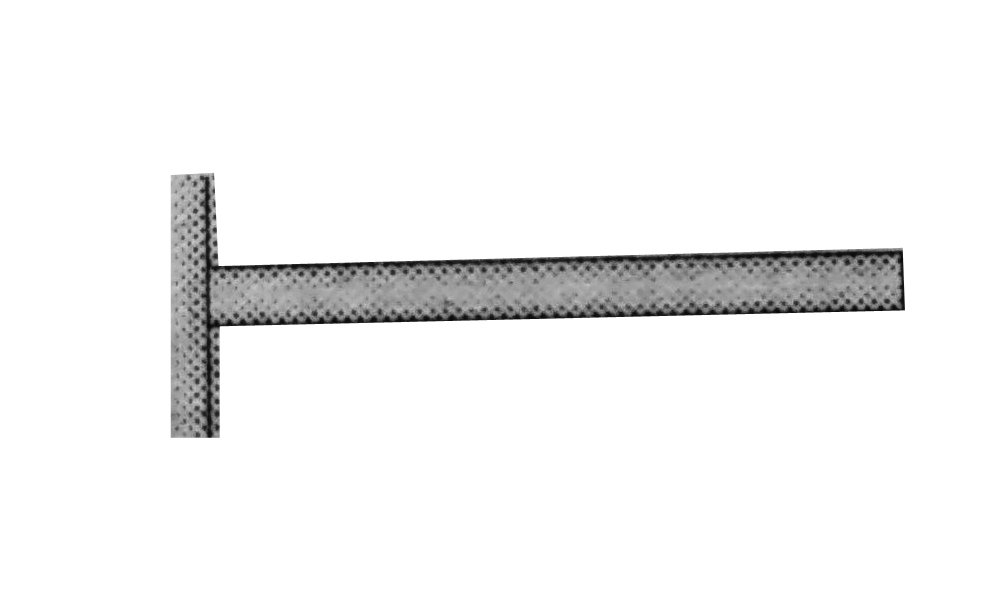Passage-III :
If the ends of a rod are rigidly clamped so as to prevent any actual expansion or contraction and then the temperature of the rod is changed, the rod will develop tensile or compressive stress or thermal stress. This type of stress sometimes could be adequate to cause permanent strain or also break the rod. To avoid damages for the above said reasons concrete highways are always left with gasps between the section for the expansion or contraction of concrete In a similar way, if the temperature of an object under pressure is increased but the object is not allowed to expand, the pressure will also increase. Assuming a negative sign for a compressive stress and positive sign for tensile stress, answer the following questions
Consider a rod rigidly clamped at its ends. As the temperature is increased, which of the following statement(s) is/are correct?
The rod develops a tensile stress
The rod develops a compressive stress
The rod develops a tensile stress only if the material of the rod has a high value of coefficient of linear expansion
The rod develops a tensile stress only if the material of the rod has a low value of coefficient of linear expansion
The correct Answer is:B
Topper's Solved these Questions
- THERMAL PROPERTIES OF MATTERBOOK - AAKASH SERIESCHAPTER - THERMAL PROPERTIES OF MATTEREXERCISE - ADDITIONAL PRACTICE EXERCISE (LEVEL - II) PRACTICE SHEET (ADVANCED) Matrix Matching Type Questions
2 Videos
- THERMAL PROPERTIES OF MATTERBOOK - AAKASH SERIESCHAPTER - THERMAL PROPERTIES OF MATTEREXERCISE - ADDITIONAL PRACTICE EXERCISE (LEVEL - II) PRACTICE SHEET (ADVANCED) Integer/Subjective Type Questions
2 Videos
- THERMAL PROPERTIES OF MATTERBOOK - AAKASH SERIESCHAPTER - THERMAL PROPERTIES OF MATTEREXERCISE - ADDITIONAL PRACTICE EXERCISE (LEVEL - II) PRACTICE SHEET (ADVANCED) More than One correct answer Type Questions
7 Videos
- SYSTEM OF PARTICLES AND ROTATIONAL MOTIONBOOK - AAKASH SERIESCHAPTER - SYSTEM OF PARTICLES AND ROTATIONAL MOTIONEXERCISE - PRACTICE EXERCISE
99 Videos
- THERMODYNAMICSBOOK - AAKASH SERIESCHAPTER - THERMODYNAMICSEXERCISE - EXERCISE - 3
33 Videos
Similar Questions

In the given figure, a rod is free at one end and other end is fixed. When we change the temperature of rod by Δθ, then strain produced in the rod will be
View Solution
In the given figure, a rod is free at one end and other end is fixed. When we change the temperature of rod by Δθ, then strain produced in the rod will be
View Solution
Knowledge Check
The ratio of tensile stress to the longitudinal strain is defined as
AÂ bulk modulusBYoung's modulusCshear modulusDcompressibilityThe ratio of tensile stress to the longitudinal strain is defined as
AÂ bulk modulusBYoung's modulusCshear modulusDcompressibility
In the given figure, a rod is free at one end and other end is fixed. When we change the temperature of rod by Δθ, then strain produced in the rod will beAαΔθB12αΔθCzeroDinformation incomplete
Examples on thermal expansion||Thermal stress & thermal strain||Examples on thermal stress & strain
View SolutionA copper rod is fixed between two supports. Its temperature was raised by 50∘C. What is the resulting stress in the rod?
View SolutionA metal rod if fixed rigidly at two ends so as to prevent its thermal expension. If L,α , Y respectively denote the length of the rod , coefficient of linear thermal expension and Young's modulus of its material, then for an increase in temperature of the rod by ΔT, the longitudinal stress developed in the rod is
View SolutionWhen a rod is heated but prevented from expanding, the stress developed is independent of
View SolutionThe rod shown is in equilibrium position. Find stress in the string.

View Solution
